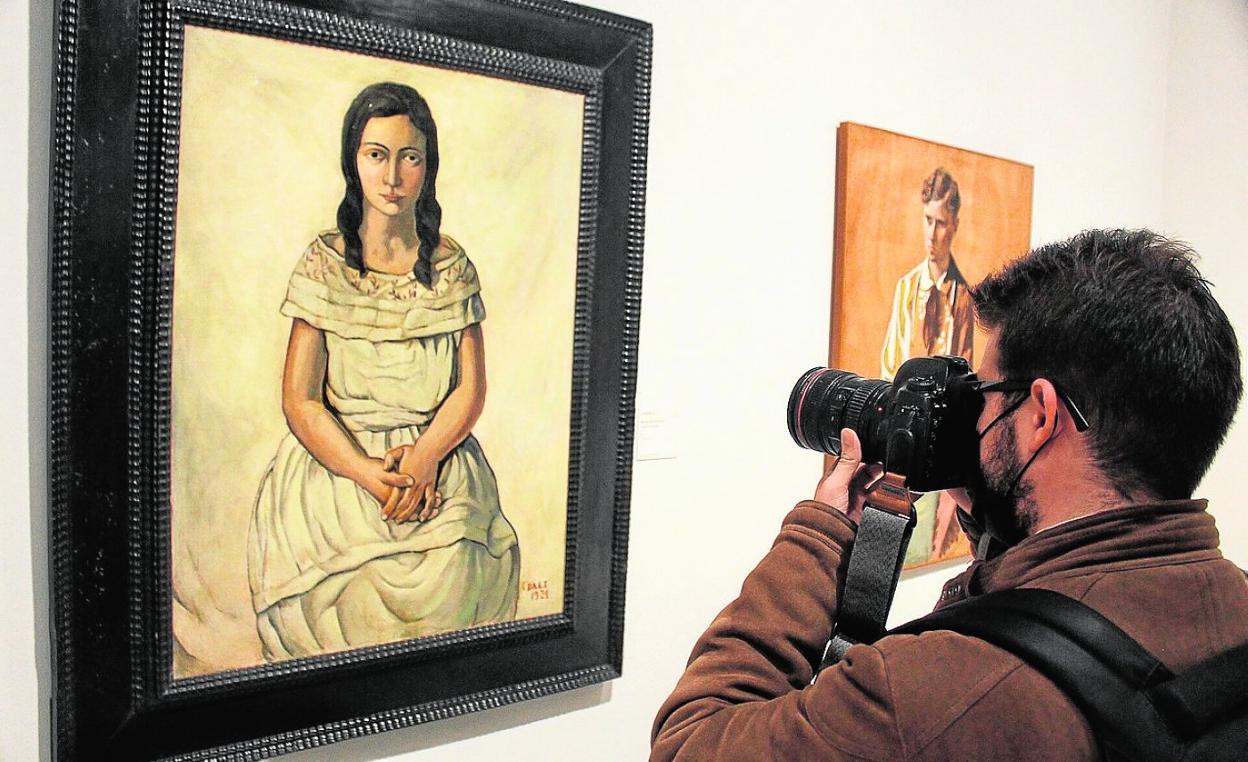Thyssen Museum revives 'ignored' Spanish art from between the wars
'Real(ismos)' highlights the modernity of the new figuration through less-known works by Miró, Dalí, Maruja Mallo, Benjamín Palencia, Ponce de León and others
francisco griñan
MALAGA.
Friday, 29 April 2022, 13:21
The paradox of Spanish art at the start of the 20th century is that while major artists like Picasso, Dalí and Miró have been considered indisputable masters of the avant-garde, in general it has been undervalued, relegated to big exhibitions about the period and less studied than the other contemporary European movements.
The new seasonal exhibition at the Carmen Thyssen Museum, called 'Real(ismos)', aims to show through the artists themselves and their works the coexistence of the avant-garde with figuration that once again prevailed in European art between the wars and which, in the case of Spain, came to a premature and abrupt end with the Civil War. It contains 86 works including some with a new realism which is far from the traditional, from Maruja Mallo, Benjamín Palencia, Pablo Gargallo, Ponce de León, María Blanchard, Jorge Oramas and Julio González, among others.
"The new realists were eclipsed and ignored in different exhibitions, so we want to highlight the relevance of Spanish art from the time it was pushed into second place and the need to tell a story which until now has only been partly told" said Bárbara García y Alberto Gil, curators of the exhibition, at the opening. So in contrast to the dominant thesis that Spanish art in the 1920s and 1930s was of less interest and quality, the display shows graphically that although many of the artists are not known nowadays, their works became part of European modernity after having been absent for so long.

This original art which, like the rest of the continent, returned to figuration and order after the catastrophes of the Great War but was contaminated by the avant-garde and far from academic, is what can be seen in 'Real(ismos)'. A return to the landscapes, portraits and still life, the three great features in this display, showing "figures caught in an instant after the cataclysms of the avant-garde and the world war," said Bárbara García. The collection also includes prints and, especially, photos, which also had a great influence on this new realism.
"It was such a culturally rich period, that we could have included film and literature," explained Alberto Gil, indicating the portrait of writer Rosa Chacel, pale skinned and with red shoes, by her husband Timoteo Pérez Rubio. In this second room, called 'Sujetos', attention is drawn to another woman with a deep gaze, frozen gesture and large hands, 'Portrait of Anna María', painted when Salvador Dalí was still searching for his own style. Likewise, in the 'Objetos' room we find the still lifes from Benjamín Palencia, Francisco Bores y Julio González, more avant-garde than Dalí at that time, although the most groundbreaking artist was a woman, Maruja Mallo, one of the few women in Spanish art. Her 'Desnudo surrealista' and 'Estampa' can both be seen here, along with works by Ángeles Ortiz y María Blanchard.
The first room, 'Espacios', introduces visitors to the exhibition through the landscapes which show this recognisable figuration but are apart from academic realism. Among the pieces that catch the eye are a rural Mediterranean setting in which the colours are more pronounced than the forms, 'Paisaje de Mont-roig' (1916), in which we discover a different Joan Miró, and prior to the abstraction which defined his recognisable work. This country motif is also present in José María Ucelay and Horacio Ferrer, but already expressing a major change towards the urban and industrial, with Daniel Vázquez Díaz's 'La fábrica bajo la niebla' and Ángel López-Obrero's 'Casa en construcción', with Gabriel Casas' photo 'Andamios en la Sagrada Familia' (1930).
Unusual and important
This exhibition, which is sponsored by Fundación La Caixa and Soho Boutique Hotels, is so unusual that it places the Carmen Thyssen Museum on a level of its own. It is "a contribution to the history of Spanish art which is our interest and our concern," said the artistic director, Lourdes Moreno. The display had been planned before the 2020 lockdown, and despite the delay and difficulties caused by the pandemic, it has works from over 50 different collectors and galleries. These include the Reina Sofía museum, the Bilbao Fine Arts museum, the Nacional de Catuña, the IVAM, Gala Salvador Dali Foundation and the Museum of Malaga.
"We also want to highlight that although many people said we couldn't hold exhibitions of this type any more, here we are, doing just that," said Alberto Gil.
